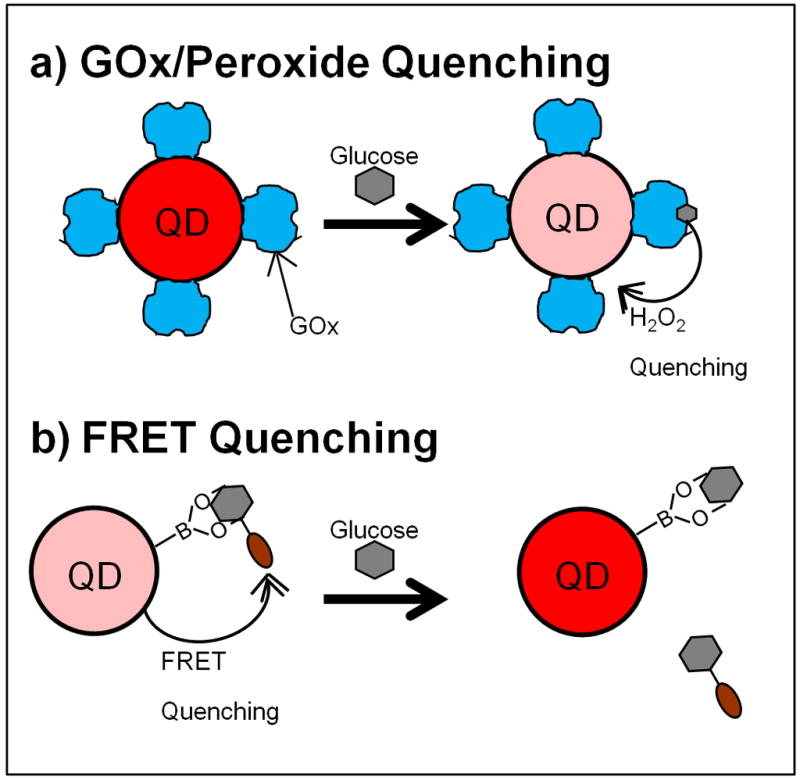Figure 3.

Quantum Dot-based glucose sensors. The fluorescence or phosphorescence of QDs can be quenched by hydrogen peroxide. Glucose sensors are fabricated through attachment of GOx to a QD reporter (a). In the presence of glucose, the enzyme generates hydrogen peroxide, which quenches the QD, providing an optical signal change proportional to glucose concentrations. For examples, see [76–79]. QDs can also be quenched by chromophores through FRET (b). Glucose sensors can be fabricated through attachment of a recognition element to the QD and attaching a FRET quencher to a glucose analogue. Without glucose, these molecules are bound together, quenching the QD fluorescence. Glucose displaces the quencher, increasing QD fluorescence. For examples, see [80–81].
